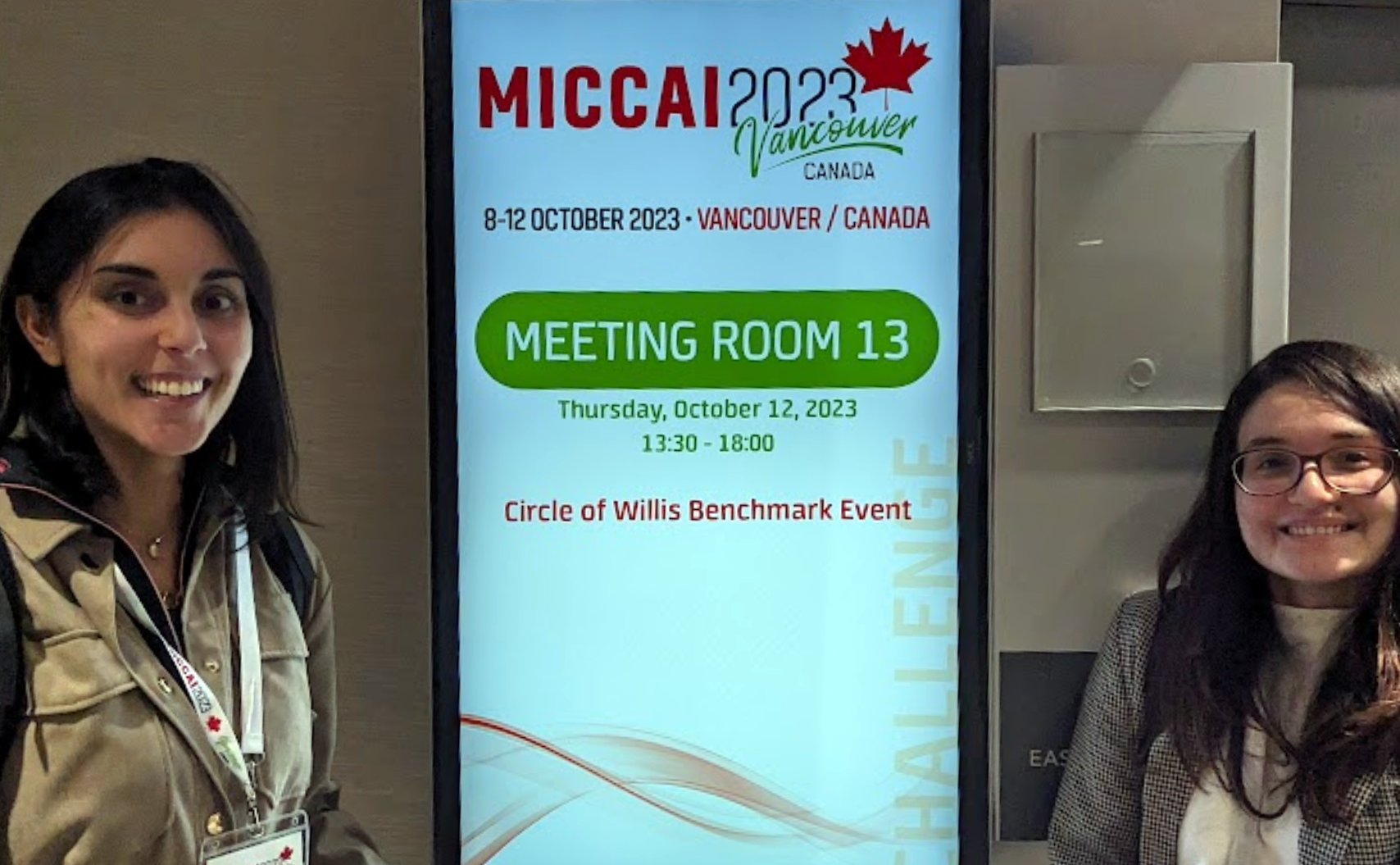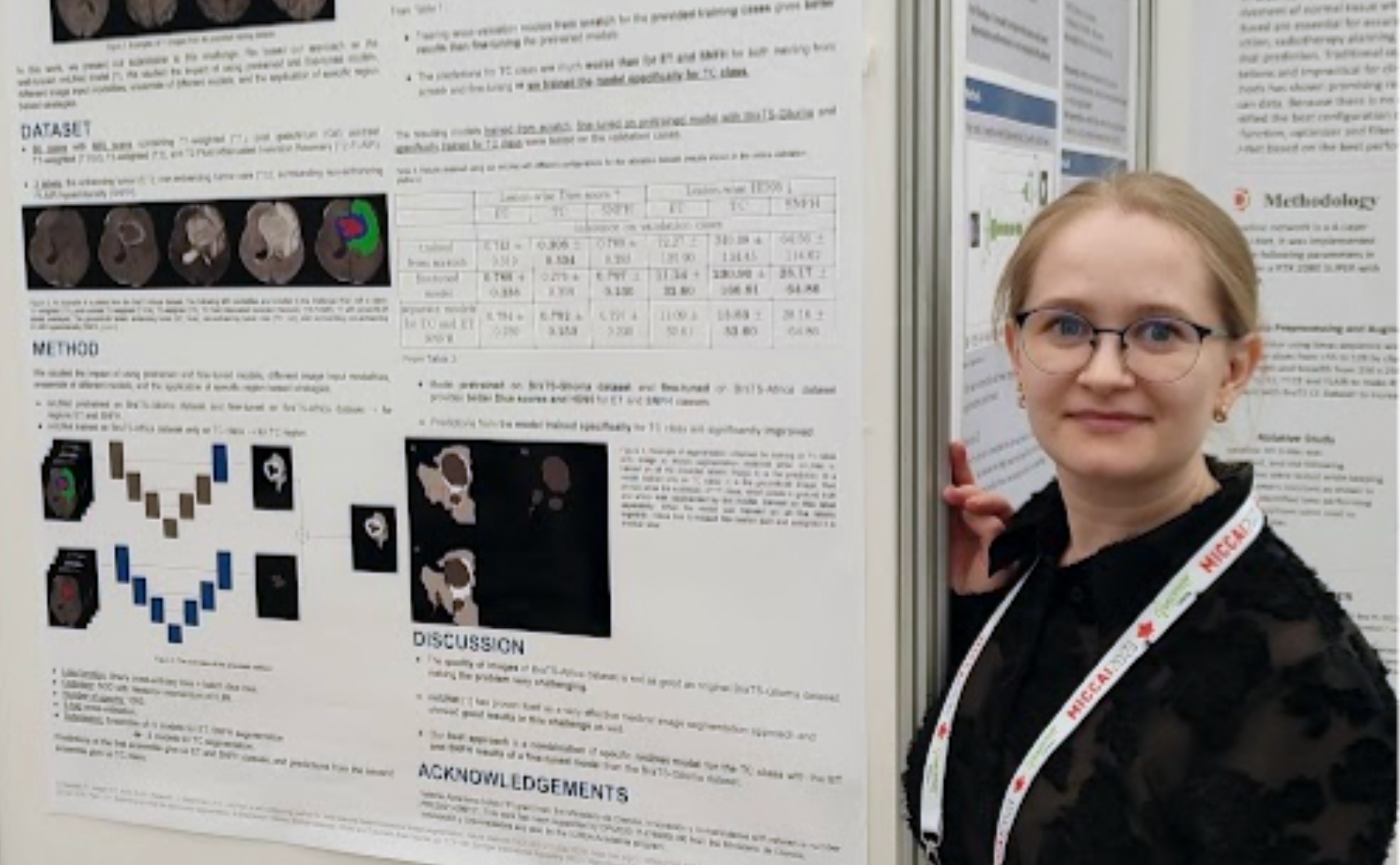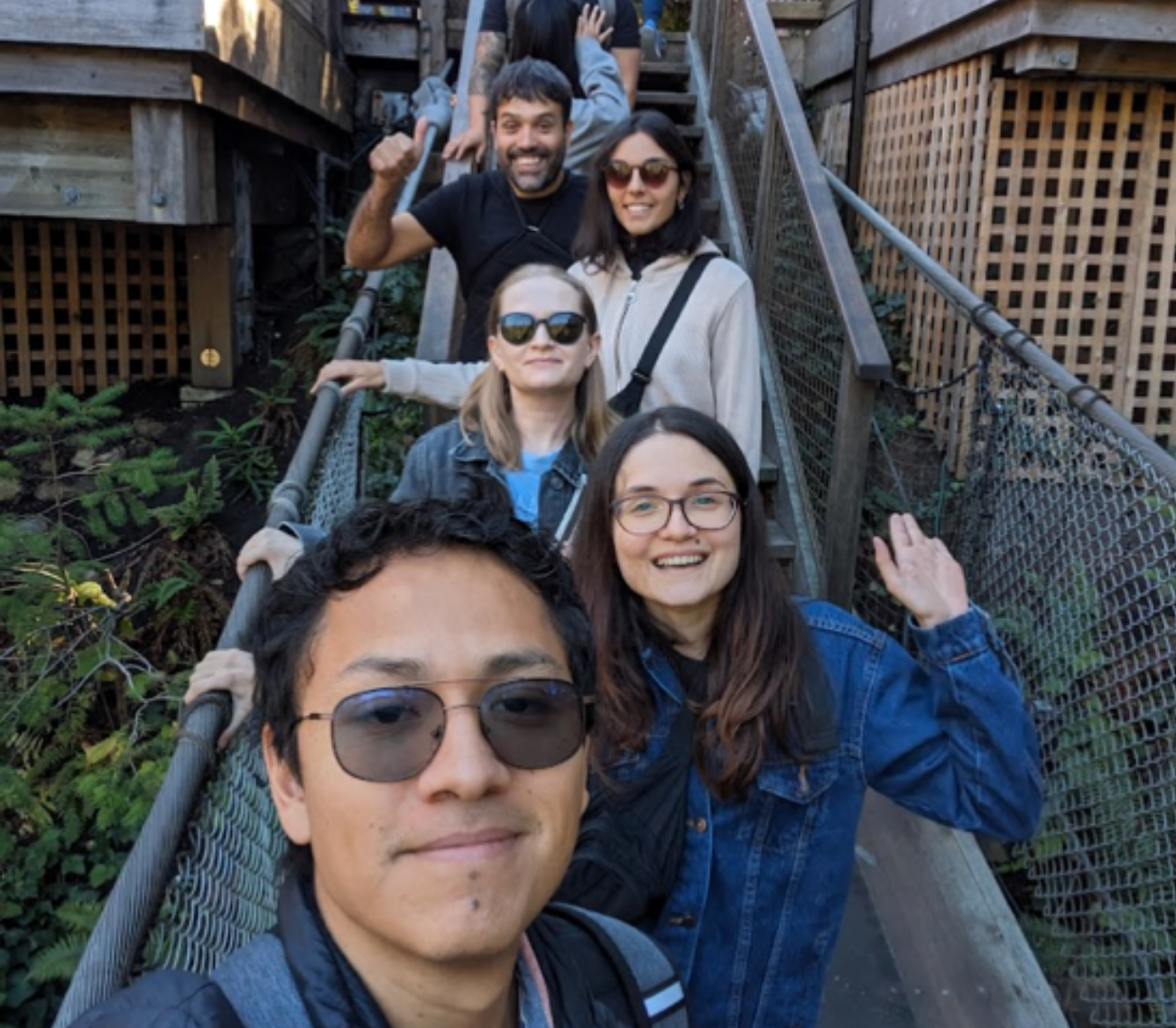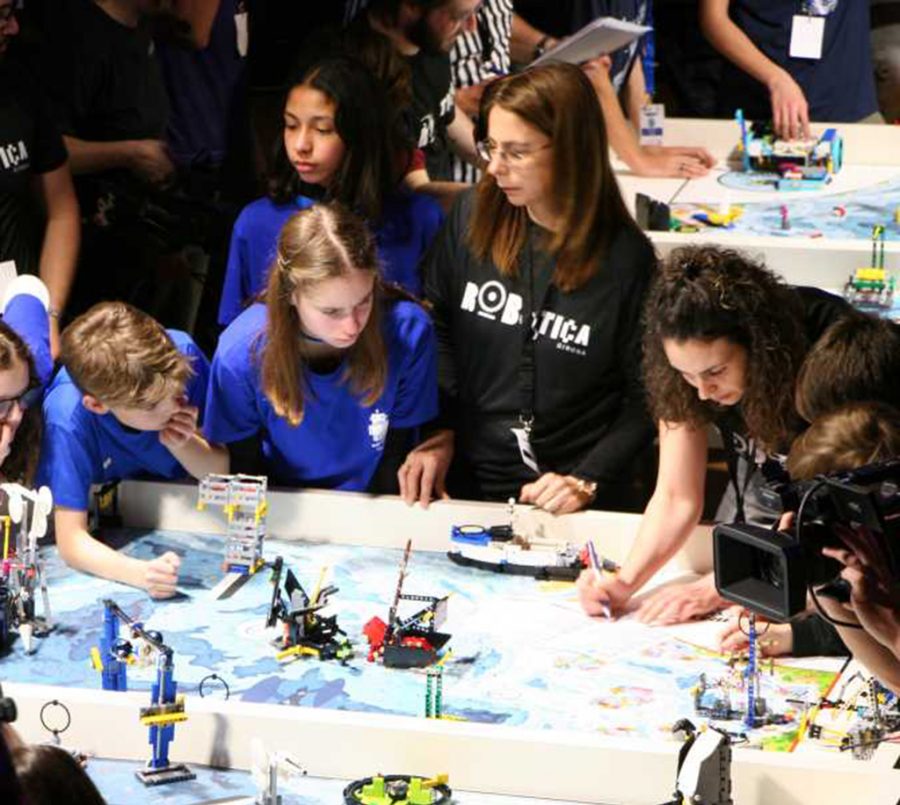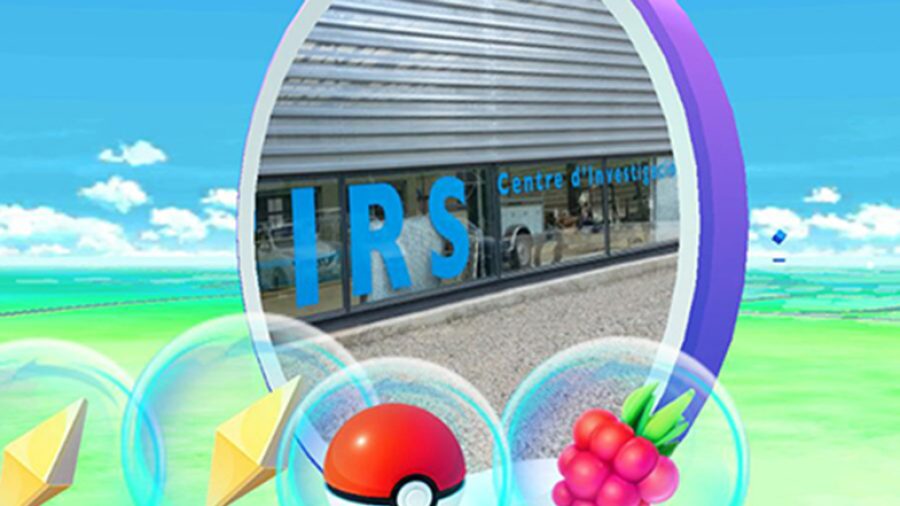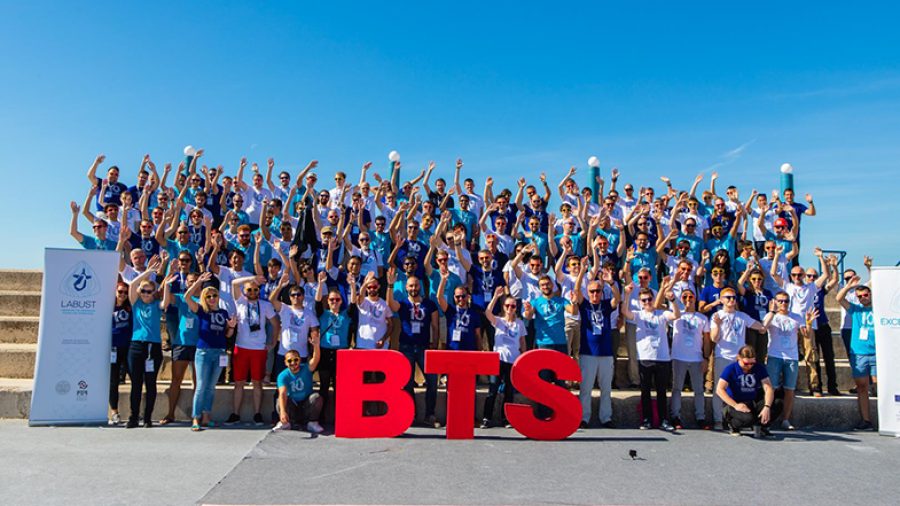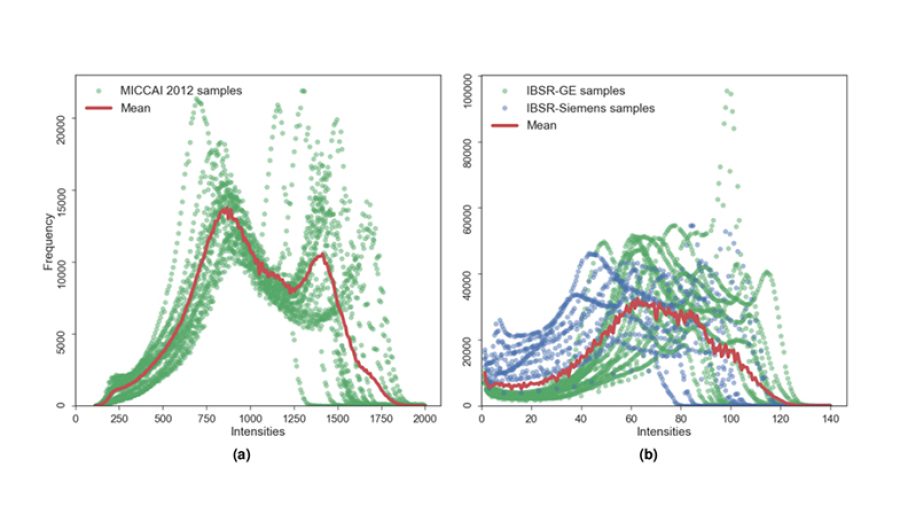As is the case every year, the Medical Image Computing and Computer Assisted Interventions (MICCAI) international conference was held for its 26th edition in Vancouver. This year, five ViCOROB PhD students and Dr. Robert Martí attended the event at the Vancouver Convention Center.
The five students participated in various workshops, challenges, and poster sessions. Valeriia Abramova, a second-year PhD student from the brain imaging research group, took part in the International Brain Tumor Segmentation (BraTS) 2023 Africa sub-challenge and presented her work during the second day’s satellite events poster session. Uma Lal-Trehan and Cansu Yalcın, both first-year PhD students, participated in the Topology-Aware Anatomical Segmentation of the Circle of Willis (TopCoW) challenge, the first of its kind, and achieved remarkable results. Cansu Yalcın, along with Hasna Hamadache, a PhD candidate who couldn’t attend the conference, secured the 2nd and 3rd places in the binary classification sub-challenge for MRA and CTA images, respectively, and brought back two adorable Swiss toy cows as awards from Zurich.
Marawan Elbatel, a first-year PhD student from the breast imaging research group under the co-supervision of Dr. Robert Martí and Dr. Xiaomeng Li from the Hong Kong University of Science and Technology, claimed the 1st and 2nd places in the Surgical Instrument Segmentation in Endoscopic Videos challenge (EndoVis-SynIss) and the Pubic Symphysis-Fetal Head Segmentation and Angle of Progression (PS-FH-AoP-MICCAI 23) challenge, respectively. He was also honored with the Best Paper Award from the Distributed, Collaborative, and Federated Learning (DeCaF-MICCAI) workshop. Ricardo Montoya, another first-year PhD student from the breast imaging group, participated in the Tumor Detection, Segmentation, and Classification Challenge on Automated 3D Breast Ultrasound (ABUS) 2023, securing the 2nd place in the lesion segmentation sub-challenge. It’s worth mentioning that all five students are graduates of different batches from the Erasmus Mundus Joint Master’s Degree in Medical Imaging and Applications (MAIA), coordinated by the University of Girona.
MICCAI conferences are well-known as a gathering place for researchers from around the world to present the latest advances in medical imaging. This year’s keynote speaker was Yann LeCun, a Turing Award laureate and a prominent figure in deep learning. He emphasized the power of self-supervised learning, the importance of open-source science, and the idea that AI is a positive tool for humans rather than a threat.
Another distinguished keynote speaker was Professor Mihaela van der Schaar from Cambridge University, who discussed her lab’s contributions to synthetic data generation, focusing on the creation of tabular data and the importance of multimodal data in unlocking the full potential of future AI algorithms.
During the three main conference days, there are six oral sessions with two simultaneous oral presentations, requiring participants to choose which sessions to attend. During these sessions, attendees have the opportunity to engage directly with authors and ask them questions about their work. Additional events such as CLINICCAI (an event dedicated to healthcare practitioners willing to discuss their research), Women in MICCAI, Fireside Chat with Stalwarts, and more, are organized to enhance the conference’s content.
One of the strengths of MICCAI is its ability to bring together state-of-the-art research in medical imaging AI applications from all over the world, spanning universities and companies. This provides an opportunity for networking, fostering collaborations, exposing students to cutting-edge developments, and enabling attendees to meet the individuals behind the research papers, models, and awards. MICCAI promotes the integration of the medical AI community and facilitates the exchange of knowledge and experiences among attendees and their local communities. As an experienced MICCAI participant might say, ‘You can watch all these presentations and read all these papers at home, but the networking experience, the one-to-one interaction, will never come close to what we have here if we just stay at home and make Zoom calls.

